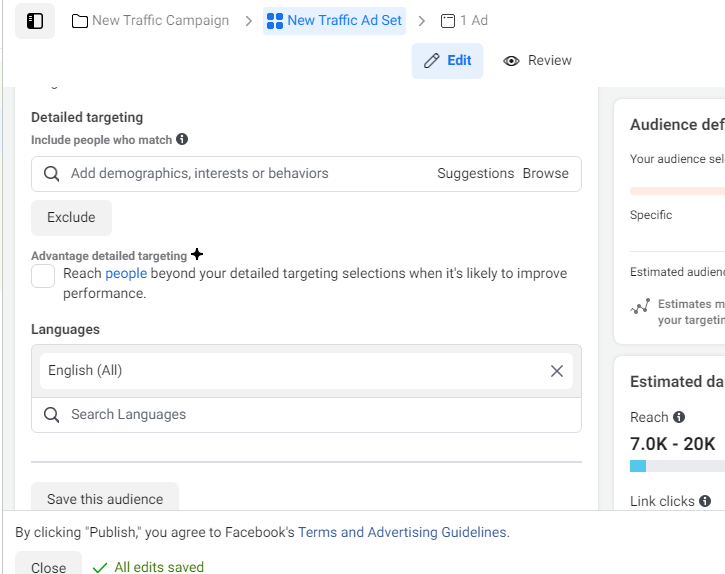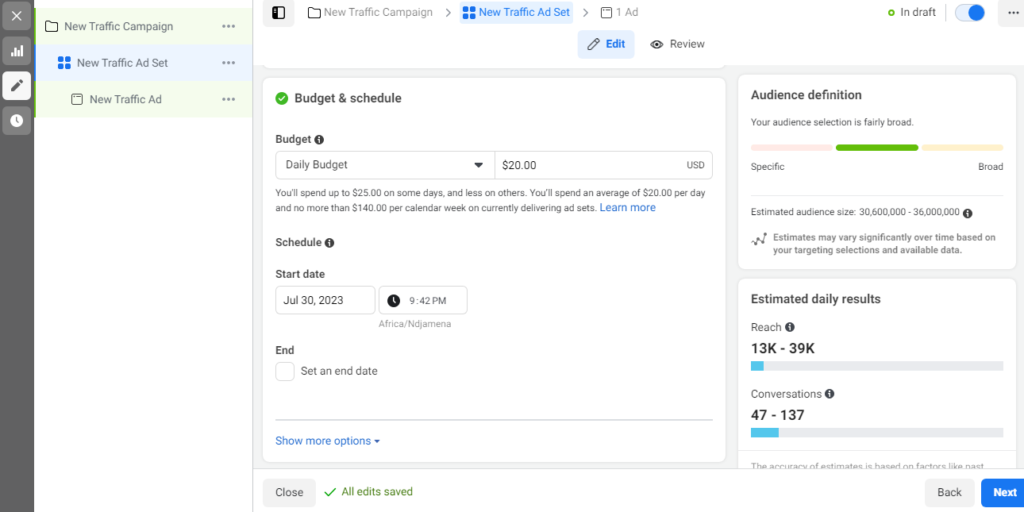
Are you looking to start running a successful Facebook ad campaign? If so, you’ve come to the right place.
Understanding the basics of running a successful Facebook ad campaign can be difficult, but with the right knowledge and tools, you can get your campaign up and running quickly.
In this blog post, we’ll cover the basics of setting up and running a successful Facebook ad campaign so you can start reaching your target audience with ease.
Facebook is the most widely used social media platform, making it an ideal space to reach potential customers. With over 2.8 billion active users, a Facebook ad campaign allows you to target specific demographics based on their interests, behaviors, and location.
Additionally, Facebook provides comprehensive metrics to help you understand the performance of your ads, allowing you to make data-driven decisions and optimize your campaign for success.
Whether you’re looking to increase brand awareness, drive traffic to your website, or generate sales, Facebook’s advertising platform offers a versatile and cost-effective solution for businesses of all sizes.

Before launching a Facebook ad campaign, it’s essential to define your goals and target audience. Your goals could be to increase brand awareness, drive traffic to your website, generate leads, or boost sales.
Knowing your campaign goals will help you choose the right ad format, bidding strategy, and targeting options.
To define your target audience, consider demographics like age, gender, location, education, income, and interests. Facebook offers detailed targeting options based on these factors, allowing you to reach your ideal customers.
You can also create custom audiences based on your website visitors, email subscribers, or social media followers.
Lookalike audiences are another effective targeting option that allows you to reach people similar to your existing customers.



By defining your campaign goals and target audience, you’ll be able to create a more targeted and effective Facebook ad campaign that reaches the right people at the right time.
It’s important to continually monitor and adjust your campaign to optimize its performance and achieve your desired results.
Before you can start running Facebook ad campaigns, you’ll need to set up an ad account. If you don’t have one yet, go to the Facebook Ads Manager page and click the “Create” button. You can create an ad account from scratch or use an existing Facebook business page.
Once your account is created, it’s time to get started with the following steps.


First, you’ll need to define your billing information and payment method. You can choose from a variety of payment options including credit cards and PayPal. Facebook requires a valid payment method to launch your ad campaigns, so make sure you’ve entered your payment information correctly.
Next, it’s time to set up your ad campaigns. You can create different ad campaigns based on your goals and objectives. Facebook offers various campaign objectives, including brand awareness, lead generation, and conversions.
You’ll then want to set up your target audience by selecting demographics, interests, behaviors, and locations that match your ideal customer. You can also upload your customer data or retarget people who have already interacted with your website or app.
Once your ad campaign is created, it’s time to create your ad set. You can select from different ad formats including images, videos, and carousel ads. Make sure to create compelling creative elements such as attention-grabbing headlines and calls to action.

Finally, you’ll want to determine your ad budget and bidding strategy. Facebook offers different bidding options such as cost-per-click (CPC) or cost-per-impression (CPM). Set your budget based on your campaign objectives and adjust as needed based on your ad performance.
Setting up your Facebook ad account may seem daunting at first, but once you get the hang of it, you’ll be able to launch and manage successful ad campaigns with ease.
Choosing the right ad format and creative elements is an essential aspect of any successful Facebook ad campaign.
Facebook offers various ad formats, including image ads, video ads, carousel ads, and more. Each ad format has its unique strengths and weaknesses, so it’s crucial to choose the one that best aligns with your campaign goals.
Additionally, selecting the right creative elements, such as visuals and copy, can make or break your ad’s effectiveness.
Your ad’s visuals should be eye-catching and relevant to your target audience, while your copy should be concise, informative, and engaging. Always aim to align your creative elements with your campaign goals and audience targeting.

Finally, don’t be afraid to experiment with different ad formats and creative elements to find what works best for your campaign.
Continually testing and refining your approach can help optimize your ad performance and ensure long-term success. Remember, the right ad format and creative elements can make all the difference in a successful Facebook ad campaign.
Once you have defined your campaign goals and target audience, it’s time to determine your budget and bidding strategy for your Facebook ad campaign.
You need to set a budget for your ad campaign. Your budget will depend on the overall goal of your campaign and the amount of money you’re willing to spend on advertising.
Facebook provides various budget options, such as daily or lifetime budgets, that you can choose from depending on your needs.

It’s essential to remember that Facebook ad costs vary based on various factors, such as audience targeting, ad placement, ad format, and competition.
Therefore, it’s crucial to keep monitoring your ad performance and adjusting your budget and bidding strategy accordingly. By doing so, you can maximize your ad spend and achieve your campaign objectives.
Once you’ve created your Facebook ad campaign, it’s time to launch and monitor it.
Launching your ad campaign is simple – you’ll simply click on the “Publish” button, and your ad will go live. But your job is far from over. You need to monitor your campaign closely to ensure that it’s meeting your goals and objectives.
Firstly, you need to track your campaign’s performance daily. This will help you understand how your ads are performing, and you can make adjustments as necessary.
Facebook provides you with detailed data about your ad campaign, including impressions, clicks, conversions, and more. Use this information to see how your ad is resonating with your target audience.
Secondly, you need to optimize your ad campaign. Facebook offers a variety of tools that you can use to optimize your ad campaign, such as adjusting your budget and targeting options. If you’re not seeing the results you want, don’t be afraid to tweak your campaign and test new approaches.
Finally, it’s important to keep your audience engaged. Make sure that your ad campaign is regularly refreshed with new creative elements, such as images or videos.
This will help to keep your audience engaged and interested in your ad campaign over time.
By launching and monitoring your Facebook ad campaign, you’ll be well on your way to achieving your marketing objectives and reaching your target audience.

Once your Facebook ad campaign is up and running, it’s important to regularly analyze its performance and make adjustments as necessary. This will help ensure you’re getting the most out of your budget and achieving your campaign goals.
First, review the metrics available in your Facebook Ad account, such as impressions, clicks, conversions, and cost per action. This data will give you insights into how well your ads are performing and which ones are resonating with your target audience.
Next, identify any patterns or trends in your data. For example, are certain ads or targeting options consistently performing better than others? Are there specific times of day or days of the week when your ads tend to get more engagement?
Based on your analysis, make adjustments to your campaign. This might include changing your ad creative, adjusting your targeting options, or tweaking your budget or bidding strategy. Keep an eye on your performance metrics after making these changes to see if they’re having the desired impact.
Overall, regularly analyzing and optimizing your campaign performance will help you get the best results from your Facebook ad campaign.
What You Should Do Now
To learn how to create a social media empire for your business, read this post
For a 1-on-1 consultation with a Console Creative representative on marketing, click this link
Tags: social media marketing